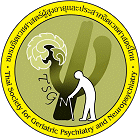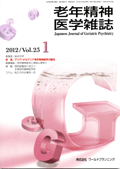Positive Self-Talk Inventory (P-STI)
P-STI Eng.pdf
P-STI Thai.pdf
Theory of Self-Talk
Self-talk refers to the internal dialogue that individuals have with themselves. This dialogue can be either positive or negative and plays a crucial role in shaping one's thoughts, emotions, and behaviors. The concept of self-talk is rooted in various psychological theories, including cognitive-behavioral theory, which posits that our thoughts influence our feelings and behaviors.
Types of Self-Talk
1. Positive Self-Talk: This involves encouraging and supportive internal dialogue. Positive self-talk can enhance self-esteem, reduce stress, and improve overall mental well-being. It often involves affirmations and constructive statements that help individuals cope with challenges and setbacks.
2. Negative Self-Talk: This involves critical and discouraging internal dialogue. Negative self-talk can lead to increased stress, anxiety, and depression. It often includes self-doubt, criticism, and pessimistic predictions.
3. Instructional Self-Talk: This type of self-talk is often used in performance settings, such as sports or public speaking. It involves giving oneself specific instructions or reminders to improve performance.
4. Motivational Self-Talk: This type of self-talk is used to boost motivation and energy. It often involves encouraging statements that help individuals push through difficult tasks or challenges.
Positive Self-Talk Inventory (P-STI)
The questionnaire, developed by Profs. Wongpakaran and Wongpakaan, is designed to measure how often individuals engage in positive self-talk and the volume at which they speak these affirmations to themselves. The inventory includes 20 statements that reflect positive affirmations and self-encouragement.
Purpose of the Inventory
1. Assessment: The inventory helps individuals assess the frequency and intensity of their positive self-talk. This can provide insights into their current mental and emotional state.
2. Awareness: By rating these statements, individuals become more aware of their internal dialogue. This awareness is the first step towards changing negative self-talk into positive self-talk.
3. Intervention: The inventory can be used as a tool in therapeutic settings to help individuals develop healthier self-talk patterns. Therapists can use the results to tailor interventions that promote positive self-talk.
4. Self-Improvement: Individuals can use the inventory as a self-help tool to monitor and improve their self-talk. Regularly practicing positive affirmations can lead to long-term benefits in mental health and well-being.
Example Statements and Their Significance
1. "I am stronger than I think.": This statement encourages self-belief and resilience. It reminds individuals that they have inner strength that they may not always recognize.
2. "I have overcome challenges before, and I can do it again.": This statement fosters a sense of competence and past success, which can boost confidence in facing new challenges.
3. "I am capable of amazing things.": This affirmation promotes self-efficacy and the belief in one's abilities to achieve great things.
Importance of Volume in Self-Talk
Why does this scale measure volume of self-talk? Volume refers to the intensity or loudness with which individuals express their self-talk statements internally or externally. While it might seem like a minor detail, volume plays a significant role in the effectiveness of self-talk. For example, Volume Reflects Belief Strength, Higher volume often correlates with greater emotional engagement, Amplified Neural Activation, and Reinforcement of Neural Pathways, Volume can influence how self-talk translates into action, and creating a Mental Anchor.
Psychometric property of the inventory
Preliminary results from a pilot study of 30 young adults demonstrated Cronbach's alpha of 0.96. Factor analysis results showed below

Scoring
The scale provided in the questionnaire is designed to measure two dimensions of self-talk: frequency (how often the statements are expressed) and degree of loudness (the volume at which the statements are spoken). Each dimension is rated separately, and the scoring system allows for a quantitative assessment of an individual's self-talk patterns. Here's a detailed explanation of how the scale works and how to interpret the scores:
________________________________________
1. Frequency Scale
This scale measures how often an individual engages in positive self-talk by expressing the 20 statements. The frequency is rated on a 5-point scale:
• 0 = Never: The statement is never expressed.
• 1 = Rarely: The statement is expressed infrequently.
• 2 = Sometimes: The statement is expressed occasionally.
• 3 = Often: The statement is expressed frequently.
• 4 = Always: The statement is expressed consistently.
Scoring for Frequency
• Each statement is scored from 0 to 4 based on how often it is expressed.
• The total frequency score is the sum of all 20 statements, with a possible range of 0 to 80.
o A higher score indicates more frequent positive self-talk.
o A lower score suggests less frequent positive self-talk.
________________________________________
2. Degree of Loudness Scale
This scale measures the volume at which the individual expresses the statements. The loudness is rated on a 6-point scale:
• 1 = No vocalization: The statement is not spoken aloud (only thought internally).
• 2 = Barely audible or mumble: The statement is spoken very quietly or mumbled.
• 3 = Quiet or low volume: The statement is spoken softly.
• 4 = Moderate volume: The statement is spoken at a normal conversational volume.
• 5 = Loud or raised voice: The statement is spoken loudly or with emphasis.
• 6 = Very loud or shouting: The statement is spoken very loudly or shouted.
Scoring for Loudness
• Each statement is scored from 1 to 6 based on the volume at which it is expressed.
• The total loudness score is the sum of all 20 statements, with a possible range of 20 to 120.
o A higher score indicates louder or more emphatic self-talk.
o A lower score suggests quieter or more internalized self-talk.
________________________________________
Combination Score: Multiplying Frequency and Loudness
In addition to analyzing the frequency and loudness scores separately, a combination score can be calculated by multiplying the frequency and loudness scores for each statement. This combined score provides a more holistic measure of the intensity or impact of an individual's positive self-talk. It reflects not only how often the statements are expressed but also how emphatically they are vocalized.
________________________________________
How to Calculate the Combination Score
1. Multiply Frequency and Loudness for Each Statement:
o For each of the 20 statements, multiply the frequency score (0–4) by the loudness score (1–6).
o Example: If someone rates a statement as 3 (often) for frequency and 4 (moderate volume) for loudness, the combination score for that statement would be:
3 (frequency)×4 (loudness)=123(frequency)×4(loudness)=12
2. Sum the Combination Scores for All Statements:
o Add up the combination scores for all 20 statements to get the total combination score.
o The possible range for the total combination score is 0 to 480:
Minimum: 0 (frequency)×1 (loudness)×20=00(frequency)×1(loudness)×20=0
Maximum: 4 (frequency)×6 (loudness)×20=4804(frequency)×6(loudness)×20=480
________________________________________
Interpretation of the Combination Score
The combination score reflects the overall intensity of an individual's positive self-talk. A higher score indicates that the individual not only engages in positive self-talk frequently but also expresses it with greater emphasis or volume. Conversely, a lower score suggests that positive self-talk is either infrequent, quiet, or both.
General Guidelines for Interpretation:
• 0–100: Low-intensity positive self-talk. The individual rarely engages in positive affirmations, and when they do, it is often quiet or internalized.
• 101–200: Moderate-intensity positive self-talk. The individual occasionally uses positive affirmations, sometimes with moderate emphasis.
• 201–300: High-intensity positive self-talk. The individual frequently uses positive affirmations, often with noticeable emphasis or volume.
• 301–480: Very high-intensity positive self-talk. The individual consistently uses positive affirmations, often with strong emphasis or vocalization.
________________________________________
Example Calculation of Combination Score
Using the same example from earlier:
1. "I am stronger than I think."
o Frequency: 3
o Loudness: 4
o Combination score: 3×4=123×4=12
2. "I have overcome challenges before, and I can do it again."
o Frequency: 2
o Loudness: 3
o Combination score: 2×3=62×3=6
3. "I am capable of amazing things."
o Frequency: 4
o Loudness: 5
o Combination score: 4×5=204×5=20
If this pattern continues across all 20 statements, the total combination score can be calculated by summing the combination scores for each statement. For instance, if the average combination score per statement is 10, the total combination score would be:
10×20=20010×20=200
This would fall into the moderate-intensity range.
________________________________________
Why Use the Combination Score?
The combination score provides a more nuanced understanding of an individual's self-talk patterns by integrating both frequency and loudness. Here’s why it’s useful:
1. Identifies Intensity: It captures how strongly an individual engages in positive self-talk, which can be a better predictor of its effectiveness in coping with stress or challenges.
2. Highlights Patterns: It helps identify whether an individual’s self-talk is more internalized (low loudness) or outwardly expressed (high loudness), which can inform interventions.
3. Tracks Progress: Over time, changes in the combination score can indicate whether interventions (e.g., therapy, mindfulness practices) are successfully increasing the intensity of positive self-talk.
(note: AI assistant DeepSeek helps with language editing)













